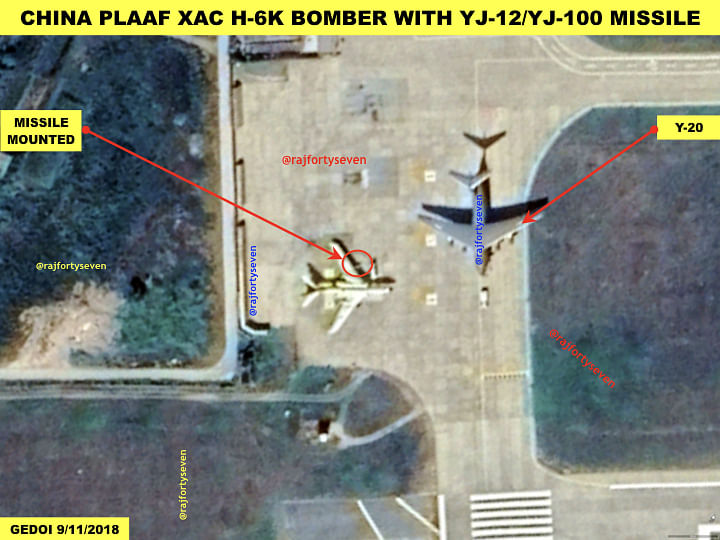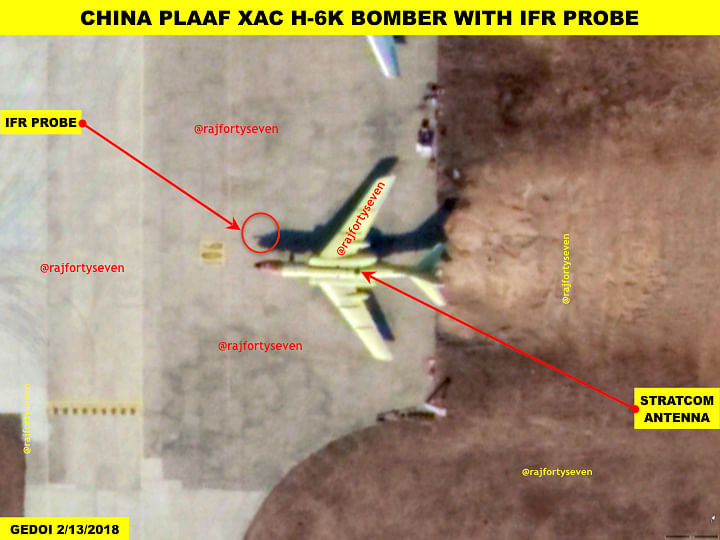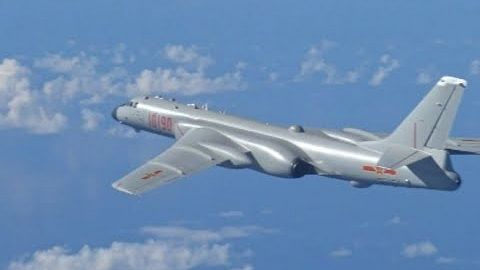After the 2017 Doklam stand-off, the Chinese army has turned the gaze of the H-6K bomber aircraft towards India by deploying it at Wugong.
New Delhi: China is believed to be deploying its frontline Xian H-6K bomber against India in the aftermath of the face-off between the two militaries in Doklam in 2017.
The Xian H-6K is the backbone of the People’s Liberation Army Air Force (PLAAF).
A licensed version of the Russian Tu-16 ‘Badger’, the H-6K is a medium-range bomber, which first flew on 5 January 2007, and was commissioned into service on 1 October 2009.
The H-6Ks — manufactured by Xi’an Aircraft Company (XAC) — produced until now have been deployed towards the American territory of Guam, Taiwan and the South China Sea. But in the aftermath of the 2017 Doklam stand-off, the PLAAF has turned the H-6Ks’ gaze towards India.
The fourth batch of H-6Ks is supposedly being deployed against India at Wugong for the PLAAF 36th Division under division commander Hao Jianke and regiment commander Wang Guosong in the Central Theatre Command.
Using Google Earth satellite imagery, ThePrint tries to understand the PLAAF’s plans vis-à-vis the H-6K and India.
Details of the aircraft
According to Chinese internet, the XAC’s internal reports have claimed that the H-6K was designed in early 2000 and started prototype production in 2003.

The new H-6K version with a solid nose cone instead of a glass one is powered by Aviadvigatel D-30KP-2 turbofan engines, with thrust of 12,000kg, similar to the Russian Il-76MD transporters.
The H-6K has a nose cone-mounted ground-scanning radar, and chin-mounted electro-optical (EO) turret.
The electronic countermeasure (ECM) antennae are observed on the nose cone and on the vertical tail-fin. Missile approach warning system (MAWS) sensors are seen on the nose cone as well as the tail.
The satellite communication antenna is mounted on the top of the rear fuselage, and a datalink turret is below the rear fuselage.
Also read: China’s footprint in the Antarctic is growing and is set to match the US soon
Armaments it carries
The H-6K carries six pylons, three on each wing. One of the pylons on each wing is placed between the engine and landing gear. Thus it can carry six KD-20As, the air-launched version of the DF-10 land attack cruise missiles.

The aircraft has carried out trials with YJ-12 and YJ-100 missiles, which were invariably carried on the second pylon.
For the first time, ThePrint has accessed images of missiles mounted on this variant, which are protruding 3-4 metres ahead of the wings. This large protrusion suggests that length of the missiles would certainly be longer than 7-8 metres.
New variant
China is now developing a new variant of the H-6K, generally referred to as the H-6N, with a nose-mounted in-flight refuelling (IFR) probe.

The H-6K with IFR probe, supported by Il-78 aerial refuelling tankers, would extend its reach beyond 3,500 km, thus making it capable of undertaking strategic missions.
This variant of the H-6K is meant to carry what Western intelligence sources claim to be an anti-ship ballistic missile (AShBM), named CH-AS-X-13, supposedly based on the DF-21D air-launched AShBM under the fuselage.
The CH-AS-X-13 missile is dubbed by the Western media as a ‘carrier killer’, with hypersonic terminal speed and manoeuvrability at steep angles of descent.
‘Mother of all bombs’
Recently, a video purportedly produced by NORINCO went viral on the Chinese internet, showing a large bomb which most Chinese media dubbed as the “mother of all bombs” (MOAB). MOAB, in fact, is an acronym for massive ordnance air blast.

The video showed clippings of an internal bomb bay dropping the bomb, and a blast at the target.
A careful analysis of the video reveals that the so-called MOAB is not really massive, but just a large bomb like the BLU-82.
Since the MOAB is supposedly carried single in an internal bomb bay, it should weigh around 6,000-9,000 kg. The drop of this bomb also showed tilled agricultural fields below, indicating it could be a dummy bomb and not a real one.
However, the H-6K today is being equipped with pilots’ safety features like ejection seats and a modern cockpit along with the tests and trials of various missiles to make it more capable than its rivals. It is likely to remain the mainstay of the PLAAF’s bombing operations until the new stealth bomber H-20 arrives in the next decade.







I think Col. Vinayak Bhat has immense knowledge about the. Defence Systems and should be recruited by DRDO to help in developing weapons for Indian Armed Forces.